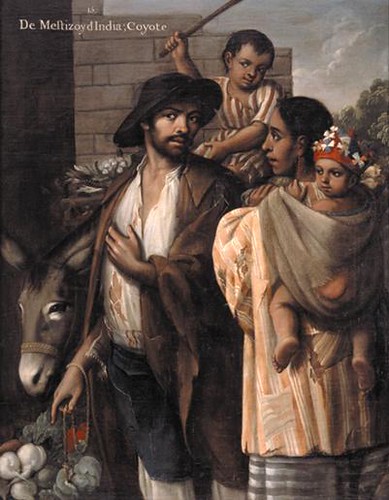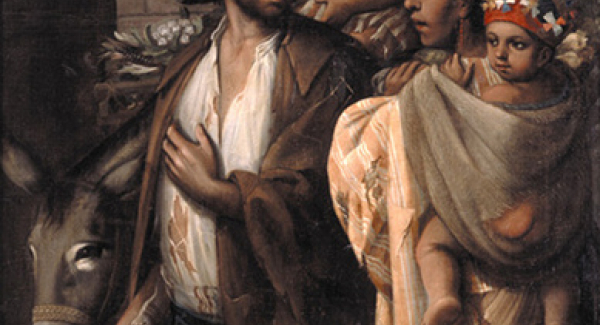Although at times honor is associated with bygone eras, lately it has also been very much in the news. Headlines scream when husbands, fathers, or even brothers, kill their female relatives for breaking their honor code. The logic behind these heinous acts is often related to disobedience of moral strictures such as staying out, associating with male non-relatives, wearing makeup or marrying without permission.
Yet, these breaches in decorum are very much related to a much older idea: honor codes. The beliefs that shape the underpinning for the concept of honor in all these aspects or situations were developed within particular contexts and periods. History can shed light on honor by providing foundational frameworks of the way in which it was operationalized in the past. Unlike contemporary psychological studies that use live subjects’ responses to certain situations, historians base their studies on people’s actions as described in archival records. This approach provides a window to the ways in which populations lived and acted upon ideas in the past, rather than how they were supposed to act. It permits a contrast between what was understood to be true and what was actually done. In this article, I will show the ways in which historical evidence can be used to provide a foundation for an understanding of honor. Using a court case taken from Mexican archives, I will illustrate how honor was lived rather than idealized. As such, I will provide an unvarnished, un-romanticized version of honor.
One of the major challenges for historians researching people who lived centuries ago is that they are limited in their sources of information. We can only take evidence from what people produced. Most history is constructed using written sources, although more contemporary work can be done with interviews. Some historians have branched out into areas such as material history (using objects), but, nevertheless, the vast archives produced by different bureaucracies remain a major starting place for the majority of historical endeavors. This inclination toward the written word poses certain challenges when studying elites. However, it is even more difficult when investigating people of the lower classes. These are the people who represented the majority of the population, but who did not tend to leave diaries, newspaper articles or memorandums containing their thoughts or social observations.
Social historians use various methods to analyze and use documents. One of the most important is to read across the grain; that is to say, to read the documents for details not central to their purpose. For example, in the court cases that I use for my work, I do not concentrate on the crimes and the question of guilt or innocence but rather the small details that reveal the mindset of the people who produced these documents. By compiling information from several documents, historians can detect patterns of behavior. In this way, they can measure plebeian thought by examining their actions and particularly patterns in their conduct. Historians such as Shoemaker (2004), Spierenberg (2004), and Gallant (2001) have pioneered this methodology for lower-class European men. In this article I will use these methods but apply them to concepts of honor for both men and women in early modern Mexico.
What Honor Meant for Mexicans: Honor and honra
Historians define honor as a framework that guided the way people behaved. It also provided them with guidelines as to how to present themselves to the world, in other words, their self-identity. In addition, honor ranked everyone within social hierarchies and so along with a sense of self, people within honor societies operated within a sense of their place relative to that of others within a social ranking system. It was formally described in treatises but, more importantly, it was acted out by people in the past. As Miller (1993) states “It was your very being.” Honor was an intangible quality that people had and defended. Because honor was elusive, it had to be confirmed by the reaction of others. It led Mexicans to devise ways of judging their relative positions in relation to others. It also meant that people had to act in ways that acknowledged their inferiority or superiority. In addition, it also justified punishment of those who did not follow the rules of honor because their infringement put in jeopardy the honor of those associated with them.
There were two fundamental parts that defined honor: status and virtue (Seed, 1988). In Spanish, there are, in fact, two separate words for honor: honor and honra. Although technically separate, the two aspects were interconnected. Many Mexicans assumed that individuals without status were inherently without virtue. Therefore, without the first (status), it was harder to lay claim to the second (virtue). Honor corresponded to birth within a family of lineage. Men and women born into noble or wealthy families could take for granted that they possessed this type of honor. Members of the elite jockeyed for position and fought over gradations of rank, but they did so within their small elite group (Cañeque, 2004). Those individuals born into high-ranking families showed their status (and thus their honor) by dressing magnificently, riding in horse-drawn carriages, and taking up a place of privilege wherever they went. This aspect of honor was very much associated and represented by the external trappings of wealth.
Mexican colonial society was highly hierarchical. Those at the top of society judged those below them by race and class and assumed that they lacked honor. The lack of external accouterments that marked high status denoted plebeians as low in rank and honor. Elite Mexicans often used external indications such as phenotype, clothes, professions, and bodily attitudes to classify people. In the late eighteenth century, these attitudes were expressed in an artistic movement called casta paintings. These paintings tried to codify the complexities of racial mixture but, in addition, they expressed ideas about social gradations and honor. Figure 1 shows the depiction of a lower class couple. Note their simple clothes that are patched and ripped. The woman is wearing a huipil—a dress associated with indigenous women. The caption identifies her as indigenous but her clothing and her hairstyle of tightly pulled-back braids all point to this identity. The painting encapsulates elite Mexican attitudes about honor by associating the couple with a profession of selling vegetables (which would have been considered lowly and dishonorable) and the use of a mule or donkey rather than a horse. This painting is a good indication of how elite Mexicans viewed plebeians and their lack of honor. It provides an iconology to classify people as low caste and without honor.

But, plebeians such as the family represented in figure 1 did not necessarily accept their lack of honor. Without titles of nobility and certificates attesting to bloodlines, it was more complicated, but plebeian men and women used other methods to assert their place in society and defend their honor (Lipsett-Rivera, in press). Although the way that elite authors codified honor in books was simple, the manner in which people lived it was more complex. Historians can go beyond these definitions and detect this complexity by reading documents that illustrate the way in which people, who technically should not have had claim to honor, asserted their honor. They self-identified as honorable persons because they were born to families that, although plebeian, were of high status within their own social networks (Cope, 1994, Gonzalbo Aizpuru, 2009). What is clear, however, is that both within elite circles and among plebeians there were gradations of honor as associated with status. This is one of the contributions that historians can make to the study of honor by separating out how people lived and expressed their honor through their actions rather than their words.
The other element of honor, honra, was associated with virtue. This quality was more egalitarian, as anyone could aspire to live a clean life, free of vices, and demonstrating valor. Yet, it was easier for those of the upper classes to assert their good morals and bravery because it was assumed that they were up-standing and courageous. Plebeians did, however, affirm their good character in some formulaic manners (Lipsett-Rivera, 1998). For example, those born to married couples made a point to say so, because they believed it served as evidence of their legitimacy. They pointed the finger at others who engaged in amorous affairs, in order to emphasize their chaste lives. They wore decent clothes while others went about in revealing rags. They were honest in their commercial dealings. For both the upper and lower classes, it helped to be born into a family with a good reputation and whose level of wealth allowed a type of insulation against temptation, but also, against suspicion. The biggest threats to honor by virtue were rumors and gossip. As such, people reacted strongly to such accusations. The two elements—status and virtue—were very much linked because it was hard to maintain social position while breaking moral codes. At the same time, elite Mexicans assumed that those born without status could not really be virtuous.
One of the lessons that can be learned from history is that, despite any claims to higher standards in the past, people tended to break conventions and rules in the past as they do in the present. Thus, even though some chroniclers may exalt the virtues of ancestors, people did not live strictly within the guidelines set out within codes of honor. While all levels of society asserted their rights to honor and acted as if they possessed this attribute, their actions did not always correspond. Mexicans valued their honor, however, and struggled to defend it. Honor was a fragile quality; it could be lost if other people did not recognize it. Therefore, it was important to defend against any breaches of this social code. Because of this fact, Mexicans attacked those who doubted their valor, who accused them of moral failures, and who would bring disgrace into the bosom of their family.
Honor in practice: The Case of the Galicias
Historians can provide an insight into how honor was lived in practice by looking at conflicts documented in the archives. When elite Mexicans fought over the desirable positions in a procession, or when more plebeian Mexicans fought over insults, they were defending their honor to the larger world. Their struggles reflected a need to present themselves externally in a manner that would be recognized as honorable and protect their reputation. Also, at times, the documents provide a glimpse into how families tried to hide conduct that, if made public, would stain their honor.
The preoccupation with honor motivated an indigenous family in the town of Xochimilco, just outside Mexico City, to attack their son’s pregnant girlfriend. Although he was indigenous, Abad Galicia could claim honor within the plebeian world. He was clearly a member of the native elite because he used the honorific don which was associated with the lower nobility. It was a fairly common honorific that implied membership in the class of hidalgos. He also had a position as governor of the town, and so, in addition to having an honorific, he could also lay claim to the honor derived from being an official. Don Abad Galicia and his family evidently considered themselves to have honor. They derived this sentiment not just from their obvious status but also because they believed themselves to be virtuous. Yet this honor, which was so apparent to the Galicias, would not have been recognized by contemporary Mexicans with even higher titles such as Counts or Dukes or with certificates of limpieza de sangreto attest to their genealogical purity. Even so, within Xochimilco, people recognized their status, which they reinforced by their actions. They defended their honor against any damage to their reputation. The Galicias’ actions can provide some insight, perhaps, into the ways that people in the 21st century relate to honor. Without a formal apparatus of noble titles or artificial distinctions of rank, individuals who aspire to honor have to defend themselves more forcefully against any potential stain to their reputation within their own social network.
It was perhaps because of the need for popular endorsement and sanction of their honor that the Galicias reacted with such violence when they discovered that their son had impregnated doña Manuela Morales. In this period, children born out of wedlock were not unusual. Colonial Latin Americans had a very high rate of illegitimacy, but generally those who wanted to maintain their honorable status had means to hide unsanctioned pregnancies (Kuznesof, 2001). Women in this situation went away to give birth and either gave away their babies to institutions, other persons, or passed them off as adopted orphans or the children of distant cousins. In some instances, mothers did not hide these illegitimate births but, later applied to have them regularized (Twinam, 1999).
Essentially, there were many less drastic ways to get around the stain of an illegitimate birth. But, these tactics demanded secrecy. Doña Manuela Morales, however, was not discrete. The witness, José Castro, reported that, despite her obvious pregnancy, doña Manuela Morales operated a stall at a local festival not long before the attack. It was at this festival that it became clear that her behavior was infuriating the Galicias. Don Abad Galicia’s daughter, María, insulted doña Manuela Morales publicly, calling her a shameless whore who came out in public to show off her big stomach. María Galicia threatened specific violence: to pull the baby out in pieces. A few nights later, the Galicias made good on these threats. They broke into doña Manuela Morales’s house at night. They pulled her out of bed, beat her, bit her, and scratched her vagina and cervix in an unsuccessful attempt to abort the fetus. The Galicias’ actions were directed at the person who threatened their reputation and their honor. They took violent action because they could not hide her pregnancy, and the existence of an illegitimate baby jeopardized their claim to honor by virtue. It also shows how the two aspects of honor—status and virtue—were intertwined. The Galicias had status as indigenous nobles and officials, but they could lose their claim to virtue because of their association with an illegitimate child. Without virtue, their status did not assure them honor.
This episode provides information about how honor was actually lived and experienced. It shows how plebeians conceived of their own honor and were willing to defend it. The incident also demonstrates that the contested identities that individuals or families presented were bound up in their own self-perceptions of honor. In this case, an indigenous family within the indigenous nobility and official class, took on a poor Spanish woman who, although she went by the honorific doña, only had a brother and a sister to defend her. She could neither marshal the forces of family connection nor call upon a community willing to shield her. While more elite women could pull off an illegitimate pregnancy, doña Manuela Morales was not in this league. And although some people sided with her and challenged the Galicias’ authority, and even identity as indigenous nobles, the Galicias ultimately prevailed because their status was more secure and their actions showed a desire to remain virtuous. Ultimately, the community’s verdict is shown in actions rather than words. In the end, it was doña Manuela Morales who was jailed, not the Galicia family. The logic behind the Galicias’s actions might find some echoes in the events reported regularly in the press that link violence at the behest of honor. When twenty-first century men attack daughters or wives whose conduct is in contravention with ideas of honor, they are protecting their reputations within a small social network that matters to them just as the Galicias did.
Patterns and Honor
This particular incident is very telling, but is it representative? Historians debate whether the deep analysis of one episode can be considered typical. Some seminal books (Davis, 1983, Ginzburg, 1980), despite being based on one court case, were widely read and very influential. Yet these studies had their critics because of their narrow focus (Finley, 1988, Davis, 1988). In their defense, the authors used their vast experience in reading the archives in order to create an exceptional analysis of these documents. So, in a sense, they used one example to reflect the patterns that they discovered in the larger corpus of material. Other historians prefer to base their interpretations on documents containing information on large groups of homicides, fights, rapes or beatings. By doing so, we highlight the commonalities between the various incidents rather that the particularities of one case. We look for patterns rather than exceptions, and we build models of behavior based on common actions rather than individual actions.
Not all plebeians defended honor in the same way as the Galicias. In fact, theirs was the only case that I found in which people tried to cause a miscarriage. But, their actions do reflect a pattern found in the actions of many other Mexicans: using violence to defend honor. Plebeians differed in their conduct from the elites who tended to use written forms of defense such as petitions, memorandums, or lawsuits. What ties the plebeian class together in all their gradations of status is that they used their fists and their weapons to defend their honor, rather than resorting to the courts. Just as the elites understood subtle insults to their honor when they were, for example, refused the right to bring a velvet cushion to sit on during mass (Cañeque, 2004) or given an inferior seat at the official bullfights (Viqueira Albán, 1999), plebeians understood what constituted an affront to their honor. The difference lay in their responses; they used physical weapons rather than written ones.
Conclusions
Although honor may seem quite insubstantial to us, something for which it is not worth killing or dying, it is clear from the documentary record that people have believed in its importance and its substance. They judged it vital to defend their reputations because, if honor was your very being, without it, you were nothing. In the case of the Galicias, it is obvious that they considered an illegitimate baby to be a very real threat to their family's reputation. The child’s presence could not be hidden, and thus would devalue their collective virtue. The actions taken by the Galicia family represented a way to guard against any stain to their reputation. In some ways, it would seem their strategy backfired, as it attracted even more attention to their predicament. Yet, in the end, the community supported the Galicias. Their honor was restored and their actions endorsed. What is clear from the historian’s point of view is that actions taken explain more about honor than the theory that can be found in treatises. It is from an examination of patterns that we can discern what honor really meant to people and how they lived it. And perhaps by looking to the past, we can also look forward to understanding the way ahead in terms of honor in the twenty-first century.
References
Cañeque, A. (2004) The King’s Living Image; The Culture and Politics of Viceregal Power in Colonial Mexico. New York: Routledge.
Cope, R. D. (1994) The Limits of Racial Domination; Plebeian Society in Colonial Mexico City, 1660-1720. Madison: University of Wisconsin Press.
Davis, N.Z. (1983) The Return of Martin Guerre. Cambridge: Harvard University Press.
Davis, N.Z. (1988) On the Lame. American Historical Review, 93, pp.572-604.
Finlay, R. (1988) The Refashioning of Martin Guerre. American Historical Review, 93, pp. 552-572.
Gallant, T. (2001) Honor, Masculinity, and Ritual Knife Fighting in Nineteenth-Century Greece. The American Historical Review, 105, 359-363.
Ginzburg, C. (1980) The Cheese and the Worms: The Cosmos of a Sixeenth-Century Miller. Baltimore: Johns Hopkins University Press.
Gonzalbo Aizpuru, P. (2009) Vivir en Nueva España: Orden y desorden en la vida cotidiana. Mexico City: El Colegio de México.
Johnson, L. & Lipsett-Rivera, S. (1998) Introduction The Faces of Honor: Sex, Shame and Violence in Colonial Latin America. Albuquerque: University of New Mexico Press.
Kuznesof, E. (2001) Gender Ideology, Race, and Female-Headed Households in Urban Mexico, 1750-1850. In V. Uribe-Uran (Ed.) State and Society in Spanish America during the Age of Revolution. (pp. 149-170) Wilmington: Scholarly Resources.
Lipsett-Rivera, S. (1998) A Slap in the Face of Honor: Social Transgression and Women in Late-Colonial Mexico. In Lyman Johnson and Sonya Lipsett-Rivera (Ed.) The Faces of Honor: Sex, Shame, and Violence in Colonial Latin America, (pp. 179-200). Albuquerque: University of New Mexico.
Martínez, M. E. (2008) Genealogical Fictions: Limpieza de Sangre, Religion, and Gender in Colonial Mexico. Stanford: Stanford University Press.
Miller, W.I. (1993) Humiliation and Other Essays on Honor, Social Discomfort, and Violence. Ithaca, N.Y.: Cornell University Press.
Seed, P. (1988) To Love, Honor, and Obey in Colonial Mexico; Conflicts over Marriage Choice, 1574-1821. Stanford: Stanford University Press.
Shoemaker, R. B. (2004) The London Mob: Violence and Disorder in Eighteenth-Century England. London: Hambledon and London.
Spierenberg, P. (2004) Written in Blood: Fatal Attraction in Enlightenment Amsterdam. Columbus: The Ohio State University Press.
Twinam, A. (1999) Public Lives, Private secrets: Gender, Honor, Sexuality, and Illegitimacy in Colonial Latin America.Stanford: Stanford University Press.
Viqueira Albán, J. P. (1999) Propriety and Permissiveness in Bourbon Mexico. Translated by S. Lipsett-Rivera & S. Rivera Ayala. Wilmington: Scholarly Resources.



